An overview of Dickinson Class of 1868:
- 30 students total
- 13 graduates, 17 non-graduates
- 24/30 were involved in campus societies or greek life
- 19 in fraternities
- 13 in Belles Lettres Society
- 8 in Union Philosophical Society
Place of Origin:
- Maryland: 11
- Pennsylvania: 6
- Delaware: 3
- Washington D.C.: 2
- New Jersey: 1
- England: 1
Despite the relatively small size of the class, there was a wide range of careers listed in the Alumni Record, making categorization difficult. I tried to organize them under broad areas, e.g. Education, Medicine, Law, Politics, Religion, etc. But again, because of the wide variety, this method wasn’t practical:
- 5 educators
- 6 physicians (5 of whom were non-graduates)
- 4 lawyers
- 4 clergymen
- 5 with military affiliations
- 2 politicians
- 2 engineers
- 2 merchants/manufacturers
- 2 journalists
- 2 railroad officials
8 students were listed as having more than one occupation in the Dickinson Alumni Record of 1905, so there is some overlap in the above list. There were also 5 student entries without any information.
Other Reference:
There were two graduates I was first interested in researching further: Alexander Crawford Chenoweth and John Franklin Goucher. These two had some of the longest descriptions in the Alumni Record, and had interesting international connections. However, after finishing my data overview, I was struck by the number of non-graduates who went on to become physicians. These were Benjamin Reid Davidson, James Edward Gibbons, Albertus A. Miller, John Cook Rives, and Charles Richey Winterson.
I ran Davidson, Gibbons, Miller, Rives, and Winterson through Wikipedia, American National Biography Online, and the Dickinson Encyclopedia, on the off chance that they might appear there, despite being relatively unknown/unaccomplished. There was a Wikipedia hit for a James Gibbons, but he was a cardinal and the archbishop of Baltimore. When I moved on to look for county histories and records of physicians in each of their respective townships in the 19th century, I encountered a number of biographies on His Eminence, but no reference sources on any of the Dickinson non-graduates.
There are no reference sources on them through Google Books, either. A search of their respective county histories yielded nothing. I did find a History of Montgomery County, PA, birthplace of James Gibbons, that was published in 1884, but the James Gibbons listed therein served as part of the 103rd Pennsylvania Regiment, a group of volunteer soldiers that was active starting in 1862. He was mustered on October 12, 1864, when James Gibbons of the Class of 1868 entered Dickinson.
- Courtesy of the Library of Congress
- Courtesy of the Library of Congress
Though I was unable to find any information on Gibbons, this particular county history is a good example of a source that could be seen as blurring the lines between the primary and reference genres. I considered it a reference because it is one in the sense that it’s offering a very compact record of the happenings in a certain area over a century. In the words of its author,
The ‘History of Montgomery County’ is presented to the public as a memorial of the first century of its corporate existence. Material facts have been diligently sought after and patient labor cheerfully bestowed upon the work. Events are chronicled in narrative rather than in controversial form, and truth, gleaned from a thousand sources, has been condensed in order to make it a valuable work of reference for the present and future generations.
The History, though it serves as a sort of encyclopedia, also dates to a time when 4 of the 5 physicians I was looking for were still alive. However, I think it is distant enough from the early careers of these men–almost 20 years removed–to disqualify it as an excellent primary source.
In closing this miniature historical inquiry, I would stress that my systematic research on Benjamin Reid Davidson, James Edward Gibbons, Albertus A. Miller, John Cook Rives, and Charles Richey Winterson was both rather rudimentary and extremely time consuming. It took approximately 6 hours just to find that there was no information to be found in any of the more popular channels, like the databases listed by Professor Pinsker, nor in a search for county histories. In the interest of time, and due to my own frustration with the dead ends, I elected to put my research on hold in favor of looking at more promising figures from the class. I may return to the physicians in the future, with a more efficient method.
Ancestry.com: John Franklin Goucher
I began my study of Goucher through Ancestry.com, primarily with the census records available there, but also through Immigration and Travel Records– Passport applications and the like, because I knew from the Dickinson Alumni reference source that he often travelled internationally.
The earliest census in which Goucher appears is the year 1850, when he was 5:
- courtesy of ancestry.com
- courtesy of ancestry.com
At the time, he was living with his mother, father, and 3 older siblings. John Goucher, the head of the family, was a physician, and three years older than his wife, Eleanor (spelled “Elenor” by the census-taker).
After this, John F. Goucher disappears from census records until 1900, according to Ancestry.com. Even allowing for name misspellings, no families with a close number of members and similar names appear in Pennsylvania, or elsewhere in the U.S. He would have been around 15 at the time of the next census, in 1860. His family stayed in the Pittsburgh area, because that’s where he is listed as going to high school in the Alumni source.
Goucher entered Dickinson in 1864, earned a Bachelor of Arts in 1868, a Master of Arts in 1872, a Doctor of Divinity in 1885, and Doctor of Law in 1899. If he was in school during all the years when the census was taken up until 1900, that would be the most probable cause for his absence from the records. More research would have to be done into the standard living situation of a graduate student in the latter half of the 19th century– dorms might not have counted as households.
It’s also entirely possible that Goucher was traveling abroad in Japan during a couple of the censuses.
Regardless, in 1900 Goucher resurfaces on the United States Federal Census, this time with a wife and three daughters, as well as a boarder named Mary McCauley, and a black servant, recorded as Nellie Kemp.
A 20 minute search in ancestry.com showed that Nellie Kemp doesn’t appear in any other census records. From this one, I know her family was from Virginia, and she was 20 in 1900.
Mary McCauley, on the other hand, was a 47 year-old widowed woman. She had one child, who was no longer alive in 1900. There is information on multiple Mary McCauleys, or variations of that name, available on ancestry, though many of these appear to be from Germany, not Maryland.
I would like to return to these two women in the future, perhaps in another post.
Sources:
American National Biography Online
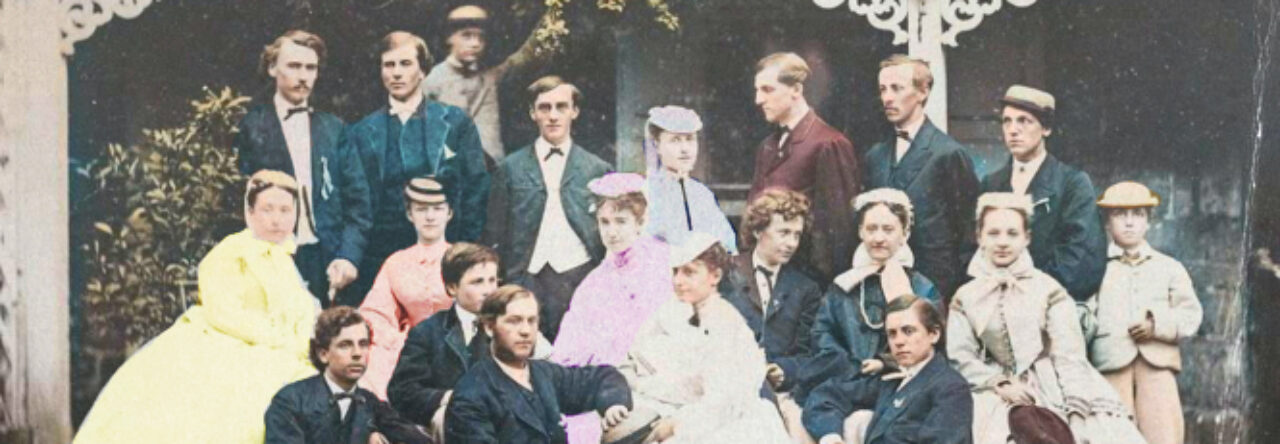
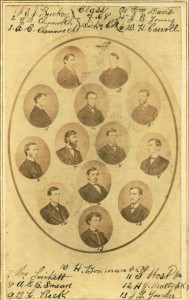
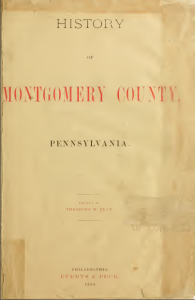

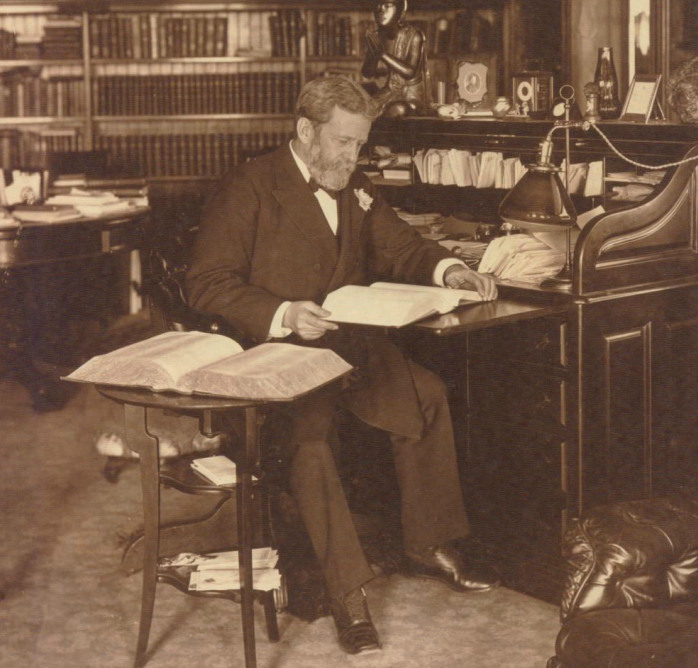
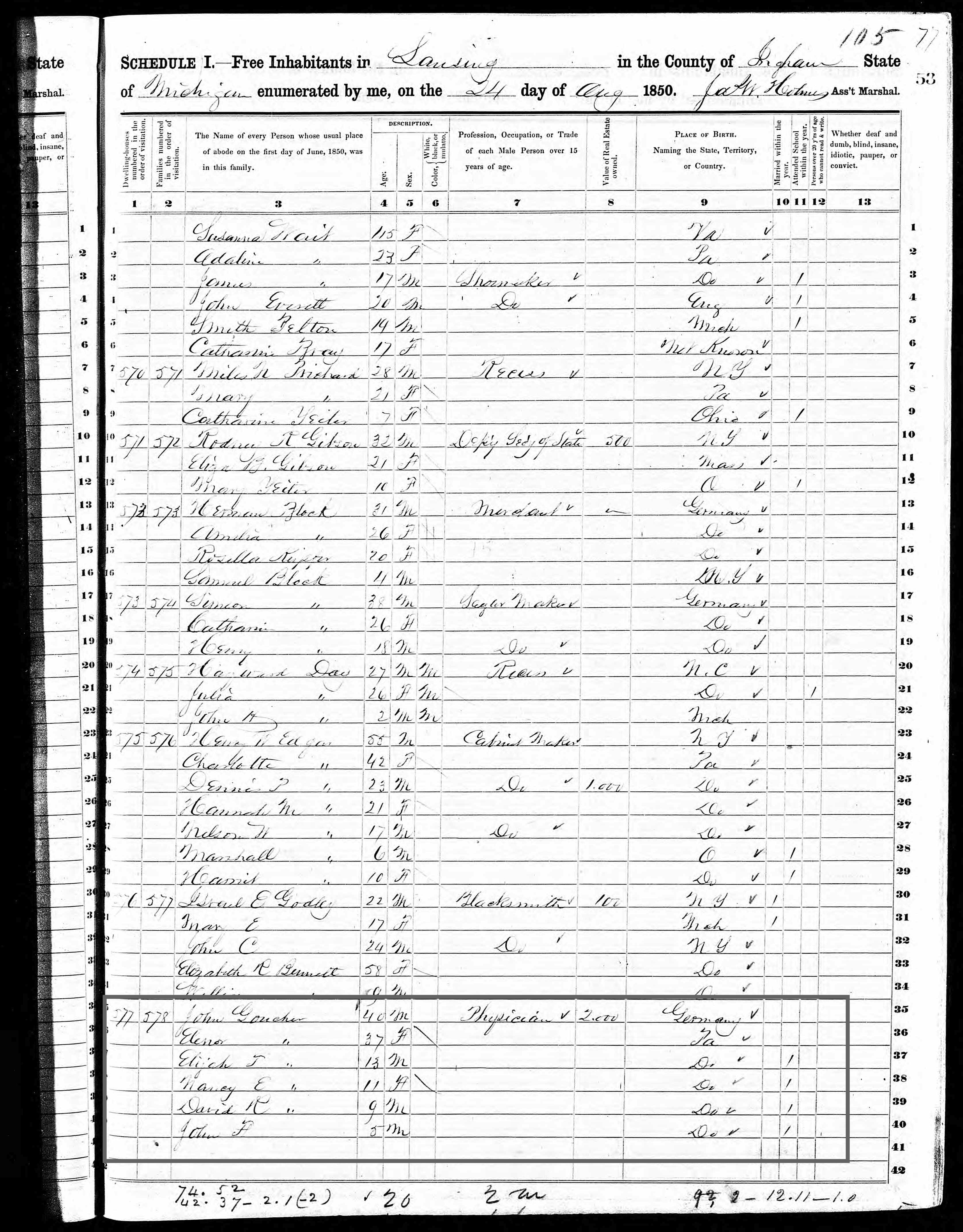



Leave a Reply